What is Alcohol Use Disorder?

Alcohol use disorder (AUD) is a substance use disorder characterized by excessive, uncontrollable drinking that impacts a person physically, emotionally, and socially. People may commonly refer to alcohol use disorder as alcohol abuse or alcoholism; however, the clinical condition is known as alcohol use disorder.
People with alcohol use disorder have an unhealthy relationship with alcohol. The need to drink consumes every aspect of their lives. Often, they need to drink more alcohol to experience the same effects, or they may experience withdrawal symptoms. This is known as physical dependence.
Signs of Alcohol Use Disorder
These are some warning signs that an alcohol use disorder may be present:
- You have a difficult time controlling how much you drink.
- You crave alcohol.
- You can’t fall asleep without drinking alcohol.
- Your drinking impacts your ability to fulfill obligations, such as work or school.
- Your drinking negatively impacts your social life and your relationships.
- You experience negative thoughts or feelings when you drink.
- You experience withdrawal symptoms when you stop drinking, such as nausea, insomnia, and sweating.
What is the Cause of Alcohol Use Disorder?
Alcohol use disorder is a chronic disease that affects the brain. Like most substance use disorders, the causes often relate to biological, environmental, and social factors.
There may be variations in genes that make some people more susceptible to an alcohol use disorder than others. In addition, individuals with relatives who have a history of alcohol abuse may be more susceptible. In fact, children of adults with an alcohol use disorder are two to six times more likely to develop the disease.
Social and environmental factors can contribute to heavy usage. If individuals grow up in a home with unhealthy drinking habits, this can certainly increase the likelihood of developing an alcohol use disorder. The same applies to school, relationships, and peer groups. How often is alcohol present in these social circles?
Even stressful environments like work and the associated pressures can influence a person’s drinking habits and usage.
Alcohol use disorder has a high rate of comorbidity with mental health disorders. Co-occurring disorders refer to conditions where there are two or more disorders present. Often individuals with mental health disorders may be more likely to use substances to reduce stress or relieve symptoms. If there is a dual diagnosis, both disorders must be treated in order to increase chances of success in recovery.
DSM-5 Alcohol Use Disorder Diagnostic Criteria
The Diagnostic and Statistical Manual of Mental Disorders (DSM-5) provides the diagnostic criteria for alcohol use disorder and other mental health disorders. The information in the manual influences diagnosis and treatment of such disorders.
There were some important updates made for alcohol use disorder between the DSM-4 and the current edition, the DSM-5. The DSM-5 combined alcohol abuse and alcohol dependence into one disorder. This disorder is diagnosed on a scale that ranges in severity (mild, moderate, or severe).
- Mild: 2-3 symptoms present
- Moderate: 4-5 symptoms present
- Severe: At least 6 symptoms present
One other key difference is that legal problems were eliminated as a criterion in the DSM-5.
The DSM-5 requires that two of the 11 diagnostic criteria be present for someone to receive a diagnosis. The number of criteria met determines the severity of the disorder.
- Alcohol was taken in larger amounts or over a longer period of time than intended.
- Tried more than once to reduce alcohol use or stop drinking, but were unsuccessful.
- More time spent drinking or recovering from the effects of drinking.
- Craved alcohol so badly that you were unable to think of anything else.
- Drinking or being sick from drinking inhibited fulfillment of obligations or responsibilities.
- Continued to drink even though it affected your relationships.
- Reduced or gave up activities or responsibilities because of alcohol use.
- More than once gotten into situations during or after alcohol consumption that affected your safety.
- Continued drinking even though it impacted your psychological or physical well-being.
- Need to drink more to feel the same effects, or effects are reduced when consuming the same amount of alcohol. This is known as tolerance.
- Experienced withdrawal symptoms when reducing alcohol consumption.
How is AUD Treated?
People with a severe alcohol use disorder typically cannot stop using on their own. Professional help is often required to increase the likelihood of abstinence and recovery. These are some of the treatment options available for alcohol use disorder.
Medical Detox
After long-term substance abuse, the body can develop a chemical dependency to alcohol and drugs. Sudden removal of these substances from the body can cause physical discomfort or even death depending on usage. For people with severe alcohol use disorder, medical detox is often a necessary first step in the treatment process.
Inpatient Treatment
Typically detox is not enough, and most clinicians will recommend another form of treatment. For many, inpatient rehab is the next step. It allows individuals to recover in a safe and structured environment without stressors or outside distractions. Clients are able to focus on their recovery.
Therapy
Therapy can occur in a treatment setting. Following treatment, ongoing therapy may be helpful in maintaining sobriety. Individuals can seek help with coping mechanisms, co-occurring disorders, etc. For alcohol use disorders, behavioral therapies are an effective method. They encourage changes to thinking patterns and behaviors that led to drinking.
Medication-Assisted Treatment
Medication-Assisted Treatment (MAT) is an evidence-based treatment option that can help adults recovering from opioid use disorders. It can also work for alcohol use disorders. Vivitrol is a non-addictive substance used to help people who have an alcohol use disorder. Research has shown that it may reduce the volume and frequency of alcohol people consume by blocking the effects of alcohol. Typically, individuals go to a treatment center where a doctor administers Vivitrol.
A combination of treatment options can often be the most effective way to recover from AUD. What works for one individual may not work for another, so an individualized treatment approach is often recommended.
Pyramid Healthcare has treatment centers throughout Pennsylvania and New Jersey to help individuals recover from alcohol use disorders. Learn more about our treatment programs, or call our admissions department at 888-694-9996 to speak with a representative.
Alcohol use disorder (AUD) is a substance use disorder characterized by excessive, uncontrollable drinking that impacts a person physically, emotionally, and socially. People may commonly refer to alcohol use disorder as alcohol abuse or alcoholism; however, the clinical condition is known as alcohol use disorder.
People with alcohol use disorder have an unhealthy relationship with alcohol. The need to drink consumes every aspect of their lives. Often, they need to drink more alcohol to experience the same effects, or they may experience withdrawal symptoms. This is known as physical dependence.
Signs of Alcohol Use Disorder
These are some warning signs that an alcohol use disorder may be present:
- You have a difficult time controlling how much you drink.
- You crave alcohol.
- You can’t fall asleep without drinking alcohol.
- Your drinking impacts your ability to fulfill obligations, such as work or school.
- Your drinking negatively impacts your social life and your relationships.
- You experience negative thoughts or feelings when you drink.
- You experience withdrawal symptoms when you stop drinking, such as nausea, insomnia, and sweating.
What is the Cause of Alcohol Use Disorder?
Alcohol use disorder is a chronic disease that affects the brain. Like most substance use disorders, the causes often relate to biological, environmental, and social factors.
There may be variations in genes that make some people more susceptible to an alcohol use disorder than others. In addition, individuals with relatives who have a history of alcohol abuse may be more susceptible. In fact, children of adults with an alcohol use disorder are two to six times more likely to develop the disease.
Social and environmental factors can contribute to heavy usage. If individuals grow up in a home with unhealthy drinking habits, this can certainly increase the likelihood of developing an alcohol use disorder. The same applies to school, relationships, and peer groups. How often is alcohol present in these social circles?
Even stressful environments like work and the associated pressures can influence a person’s drinking habits and usage.
Alcohol use disorder has a high rate of comorbidity with mental health disorders. Co-occurring disorders refer to conditions where there are two or more disorders present. Often individuals with mental health disorders may be more likely to use substances to reduce stress or relieve symptoms. If there is a dual diagnosis, both disorders must be treated in order to increase chances of success in recovery.
DSM-5 Alcohol Use Disorder Diagnostic Criteria
The Diagnostic and Statistical Manual of Mental Disorders (DSM-5) provides the diagnostic criteria for alcohol use disorder and other mental health disorders. The information in the manual influences diagnosis and treatment of such disorders.
There were some important updates made for alcohol use disorder between the DSM-4 and the current edition, the DSM-5. The DSM-5 combined alcohol abuse and alcohol dependence into one disorder. This disorder is diagnosed on a scale that ranges in severity (mild, moderate, or severe).
- Mild: 2-3 symptoms present
- Moderate: 4-5 symptoms present
- Severe: At least 6 symptoms present
One other key difference is that legal problems were eliminated as a criterion in the DSM-5.
The DSM-5 requires that two of the 11 diagnostic criteria be present for someone to receive a diagnosis. The number of criteria met determines the severity of the disorder.
- Alcohol was taken in larger amounts or over a longer period of time than intended.
- Tried more than once to reduce alcohol use or stop drinking, but were unsuccessful.
- More time spent drinking or recovering from the effects of drinking.
- Craved alcohol so badly that you were unable to think of anything else.
- Drinking or being sick from drinking inhibited fulfillment of obligations or responsibilities.
- Continued to drink even though it affected your relationships.
- Reduced or gave up activities or responsibilities because of alcohol use.
- More than once gotten into situations during or after alcohol consumption that affected your safety.
- Continued drinking even though it impacted your psychological or physical well-being.
- Need to drink more to feel the same effects, or effects are reduced when consuming the same amount of alcohol. This is known as tolerance.
- Experienced withdrawal symptoms when reducing alcohol consumption.
How is AUD Treated?
People with a severe alcohol use disorder typically cannot stop using on their own. Professional help is often required to increase the likelihood of abstinence and recovery. These are some of the treatment options available for alcohol use disorder.
Medical Detox
After long-term substance abuse, the body can develop a chemical dependency to alcohol and drugs. Sudden removal of these substances from the body can cause physical discomfort or even death depending on usage. For people with severe alcohol use disorder, medical detox is often a necessary first step in the treatment process.
Inpatient Treatment
Typically detox is not enough, and most clinicians will recommend another form of treatment. For many, inpatient rehab is the next step. It allows individuals to recover in a safe and structured environment without stressors or outside distractions. Clients are able to focus on their recovery.
Therapy
Therapy can occur in a treatment setting. Following treatment, ongoing therapy may be helpful in maintaining sobriety. Individuals can seek help with coping mechanisms, co-occurring disorders, etc. For alcohol use disorders, behavioral therapies are an effective method. They encourage changes to thinking patterns and behaviors that led to drinking.
Medication-Assisted Treatment
Medication-Assisted Treatment (MAT) is an evidence-based treatment option that can help adults recovering from opioid use disorders. It can also work for alcohol use disorders. Vivitrol is a non-addictive substance used to help people who have an alcohol use disorder. Research has shown that it may reduce the volume and frequency of alcohol people consume by blocking the effects of alcohol. Typically, individuals go to a treatment center where a doctor administers Vivitrol.
A combination of treatment options can often be the most effective way to recover from AUD. What works for one individual may not work for another, so an individualized treatment approach is often recommended.
Pyramid Healthcare has treatment centers throughout Pennsylvania and New Jersey to help individuals recover from alcohol use disorders. Learn more about our treatment programs, or call our admissions department at 888-694-9996 to speak with a representative.







